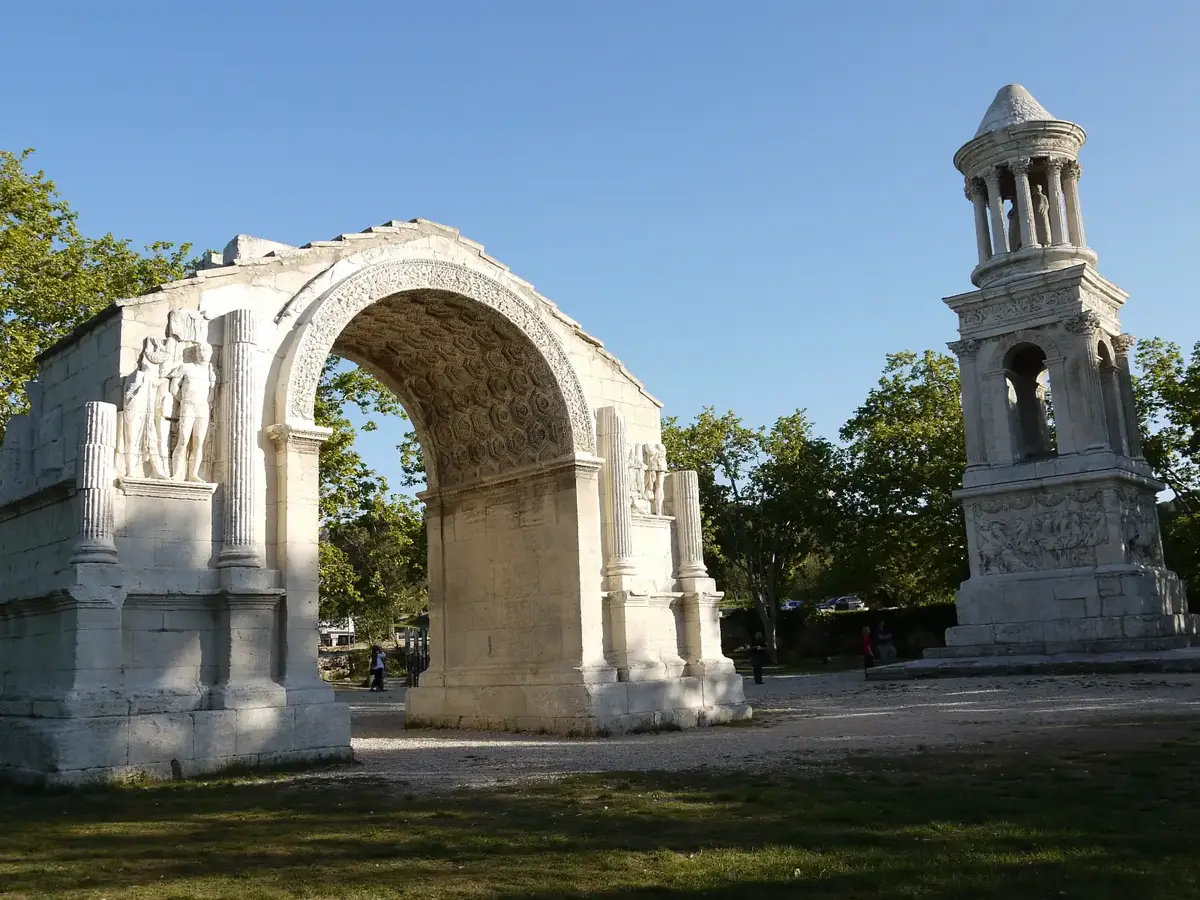Hard to miss on the road to Les Baux-de-Provence: the Antiques rise at the edge of Saint-Rémy-de-Provence, standing majestically at the foot of the Alpilles massif.
These relics of the past once marked the entrance to Glanum, a forgotten Roman city. For centuries, these monuments were the only visible traces of a city buried deep beneath earth and time—a city rediscovered in 1921, whose excavated ruins still bear witness to the prosperity of ancient Roman Provence.
Strategically located along the Via Domitia, which runs along this northern slope of the Alpilles, Glanum nonetheless met a tragic fate. In the 3rd century, around 270, a raid by Germanic barbarians abruptly ended its history. Rather than rebuild the city, its inhabitants reused its stones to construct, just a few hundred meters away, the village that is today Saint-Rémy-de-Provence.

A Mausoleum and a Triumphal Arch
The mausoleum, erected between 30 and 20 BCE, was commissioned by a wealthy family of Glanum notables related to the Julii. Its inscriptions and friezes recount the granting of Roman citizenship to one of its members by Julius Caesar himself during the Gallic Wars.
The triumphal arch was built shortly after, around 20 CE, celebrating the conquest of Gaul by Caesar's formidable legions and the prosperity Roman civilization brought to the region. The roof covering the arch today dates from the 17th century.
Both the arch and the mausoleum have withstood the ravages of time, silent guardians watching over travelers crossing the Alpilles, reminding them of a glorious past.
Find a Guest house near Saint-Rémy-de-Provence
The Antiques of Saint-Rémy-de-Provence continue to offer travelers a bridge between history and the present, evoking the splendor of a lost city amidst the magnificent landscape of the Alpilles.



